Expanded math learning opportunities
Address individual learning needs with one-on-one math tutoring for the students in your community school who need it most
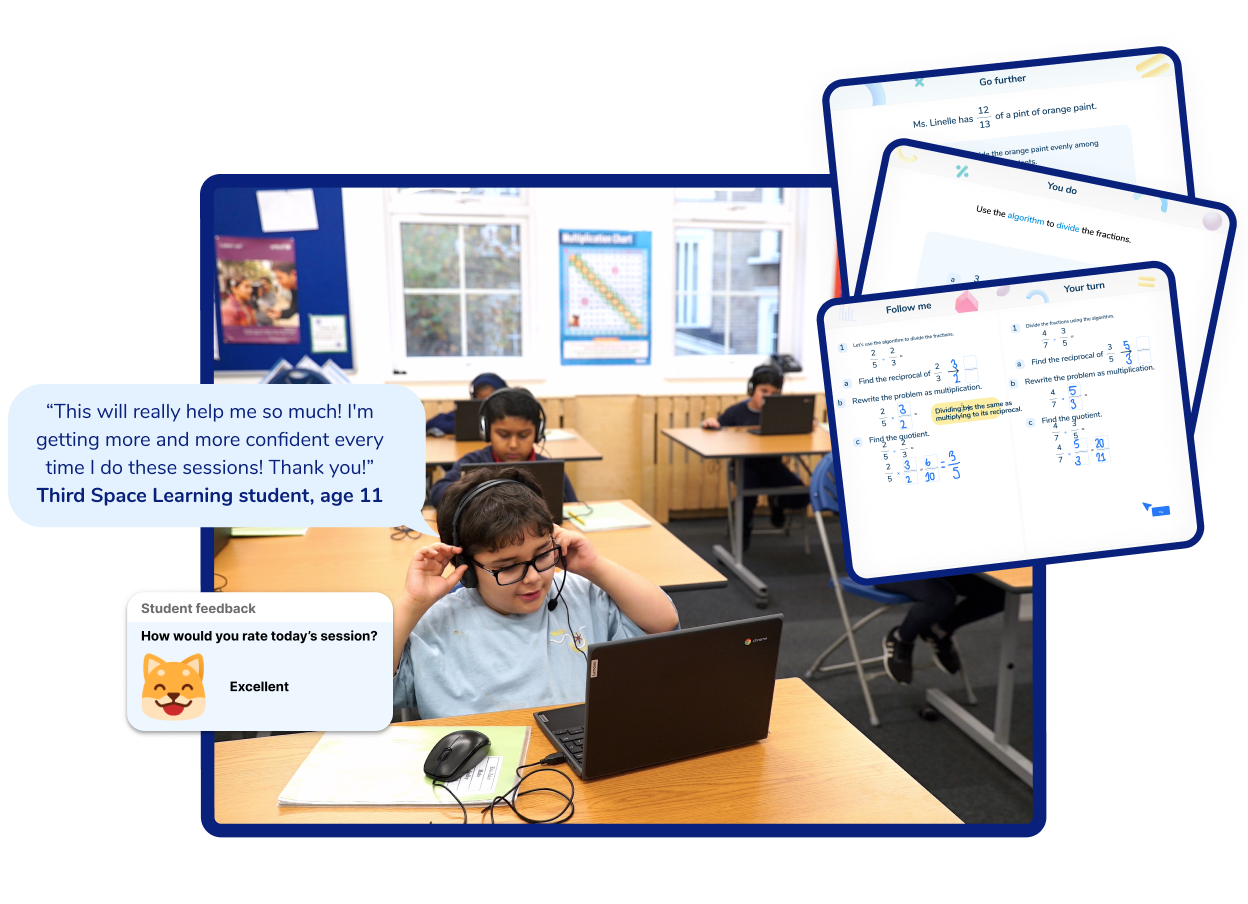
Advance equity in education: Additional learning opportunities for students who might not otherwise have access
Before, during or after school: Multiple students can receive one-on-one instruction at your chosen time
High-quality instructional materials: Tutors use scaffolded standards-aligned lessons to guide instruction
Impact beyond test scores: Students verbalize their reasoning to develop deep conceptual understanding, not just prepare for a test
Professional development: Teachers receive reports and classroom resources to inform their instruction
Personalized
Students work one-on-one with their personal math tutor to address individual learning gaps and deepen understanding.
High impact
Students receiving just one 45 minute tutoring session per week achieve 7 months of math growth in 14 weeks.
Low cost
Prices start from just $21 per student per session – 2.4x more affordable than the average cost of math tutoring.
“We just had our first session and it went great! The kids really liked it and felt like they were learning! One even said he finally felt like math was making sense.”
Michelle Craig, Instructional Coach
Sherwood Forest Elementary School, Washington
Lessons designed to build conceptual understanding
All lessons follow an ‘I do, you do, we do’ structure, encouraging students to move from guided to independent practice.
-
2nd grade
-
3rd grade
-
4th grade
-
5th grade
-
6th grade
-
7th grade
-
8th grade
Knowing that 10 tens are equal to 100
Let’s learn
The first question introduces each concept and helps students feel ready to learn
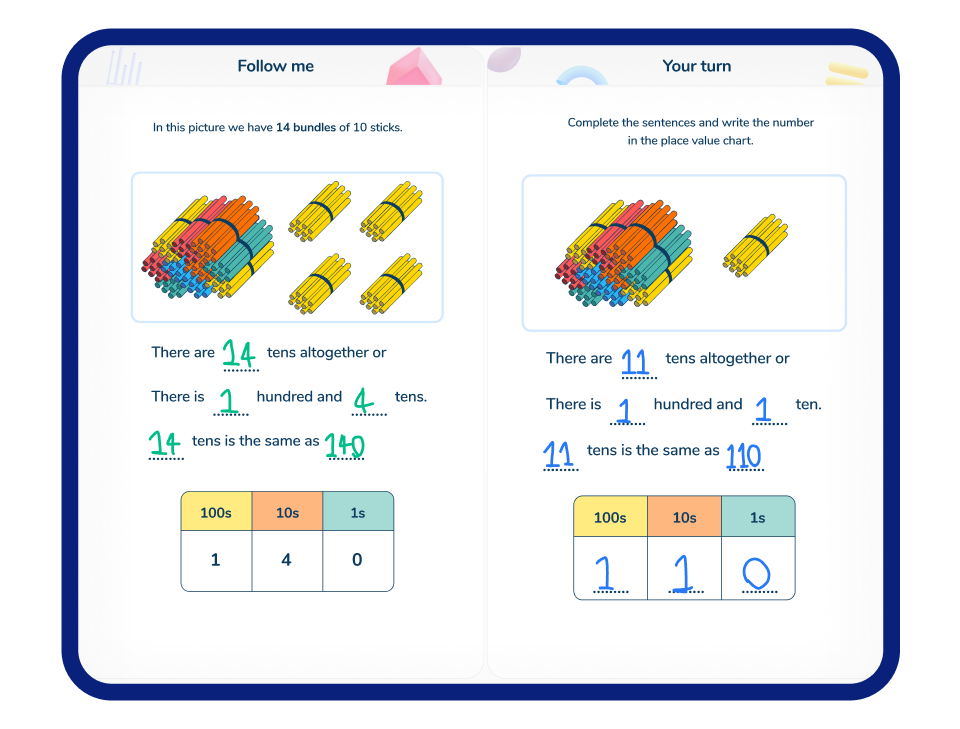
Follow me + your turn
Students work through a scaffolded example with their tutor before trying a similar question on their own
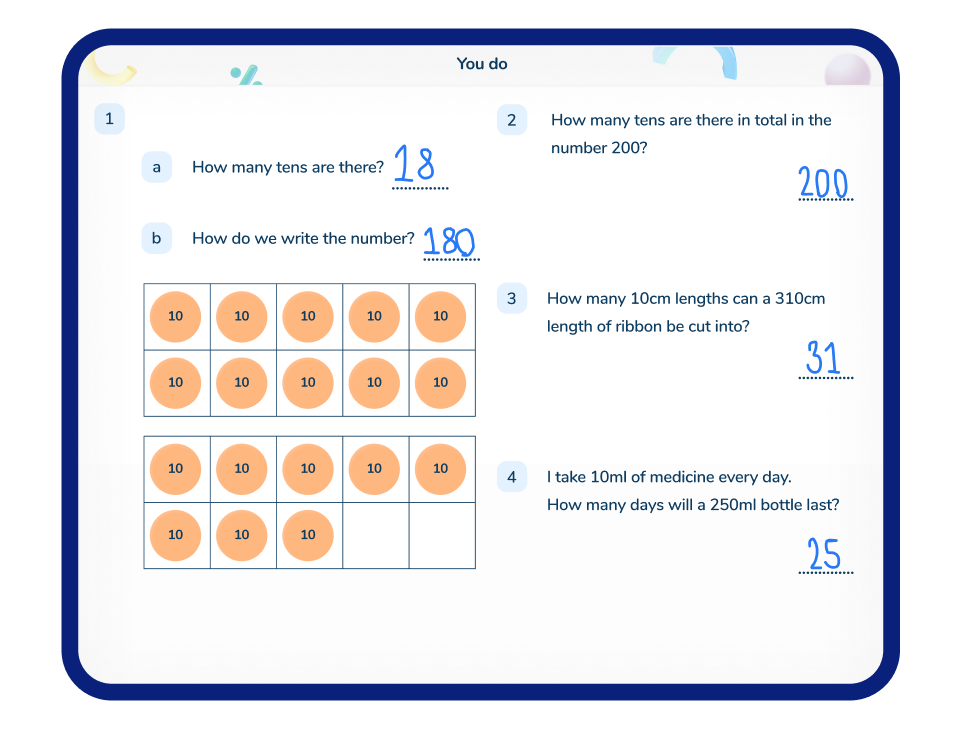
You do
A carefully sequenced next question ensures students can apply knowledge to different contexts
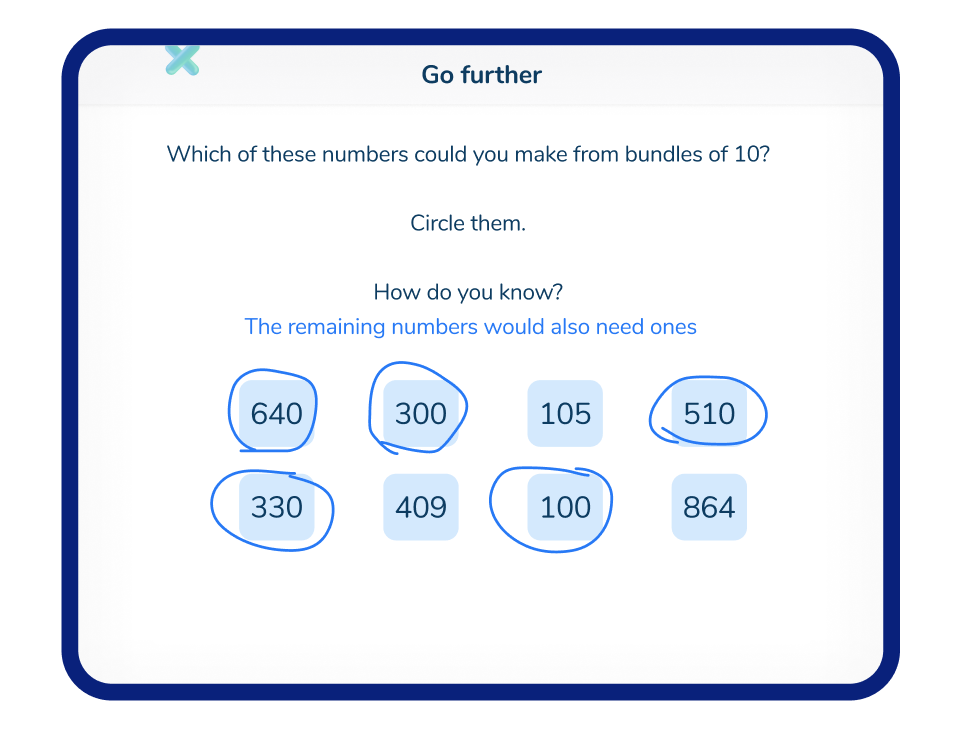
Go further
This gives students an opportunity to apply their knowledge to problem solving and reasoning questions
Subtracting whole numbers within 1,000
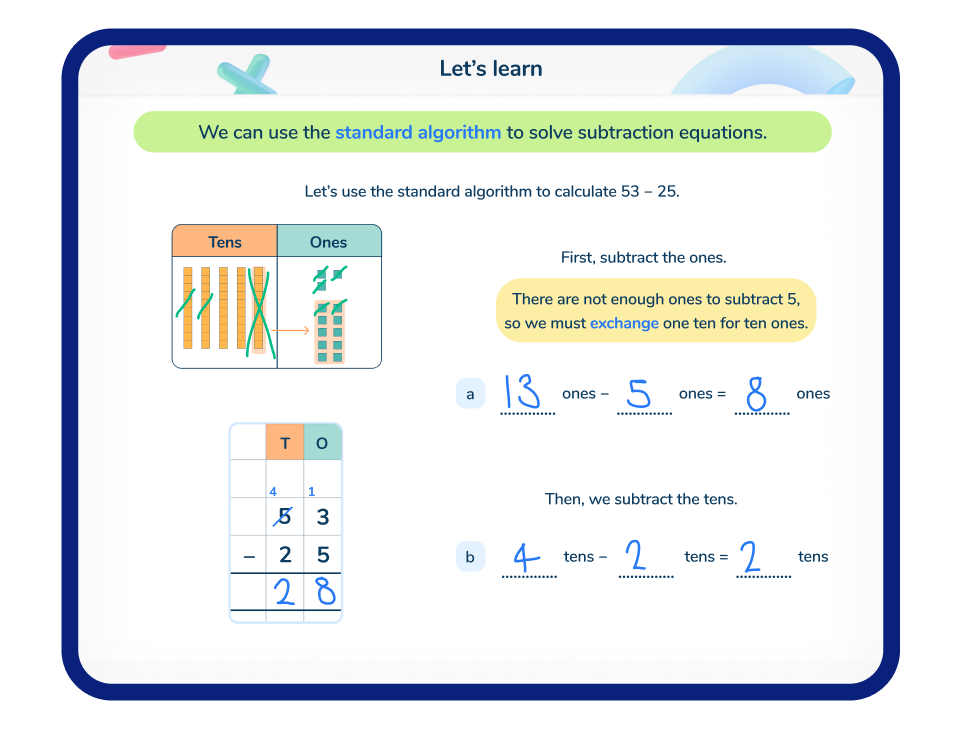
Let’s learn
The first question introduces each concept and helps students feel ready to learn
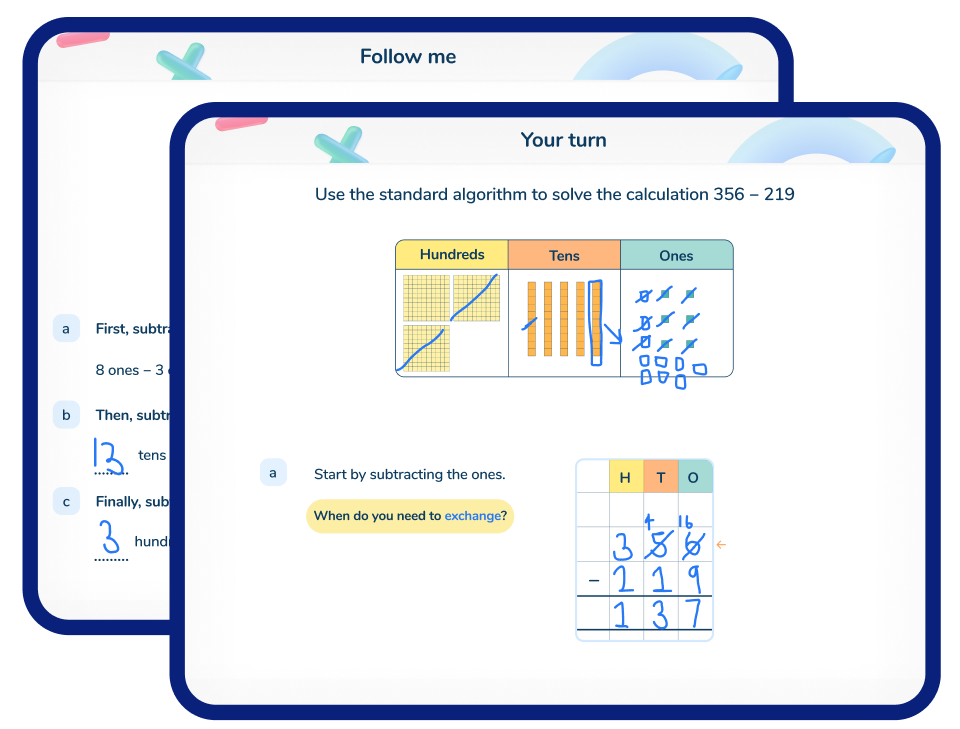
Follow me + your turn
Students work through a scaffolded example with their tutor before trying a similar question on their own
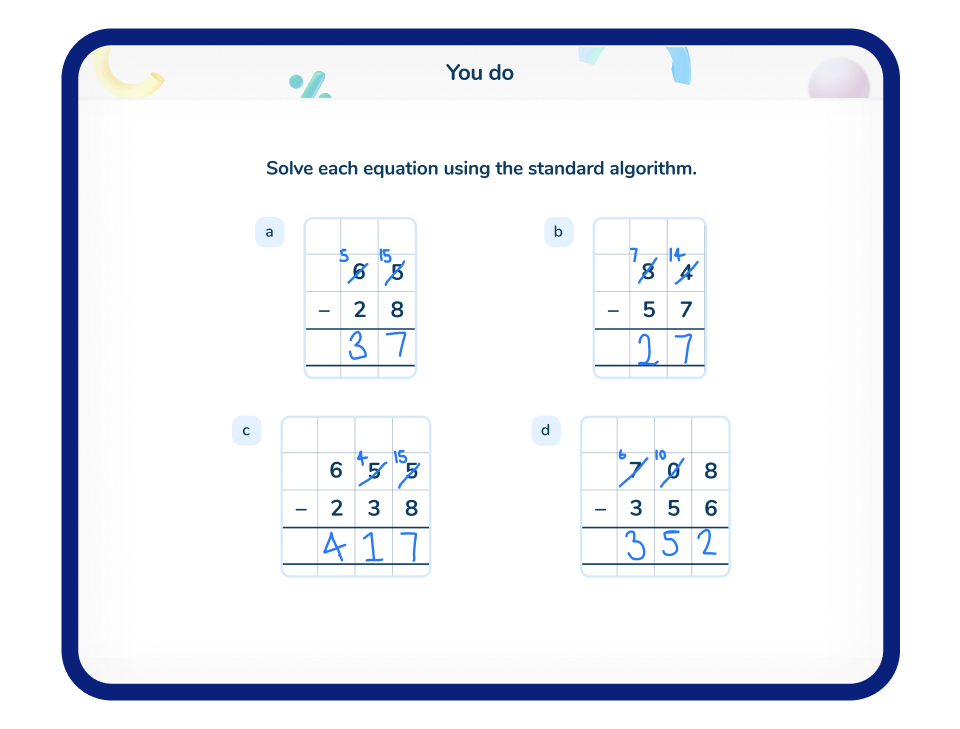
You do
A carefully sequenced next question ensures students can apply knowledge to different contexts
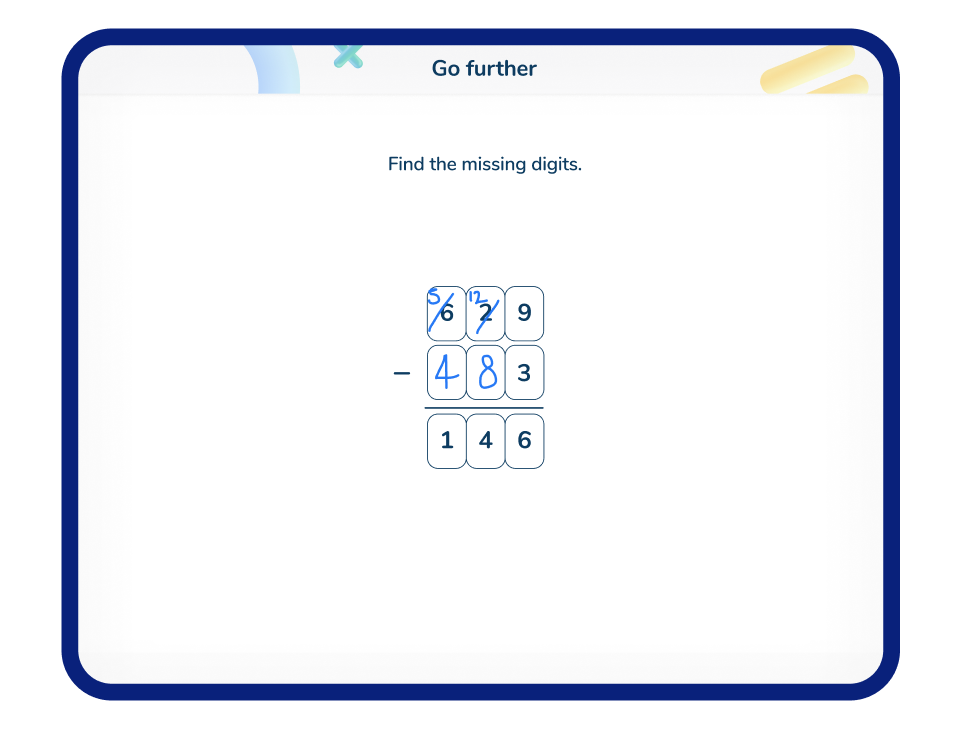
Go further
This gives students an opportunity to apply their knowledge to problem solving and reasoning questions
Multiplying 2-digit numbers using the area model
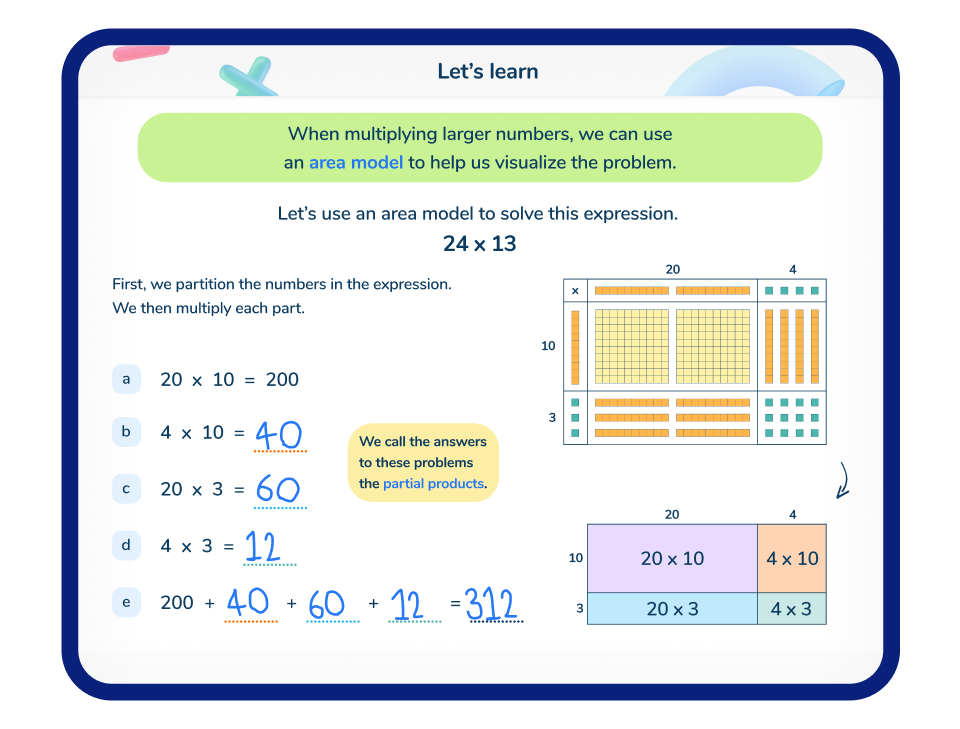
Let’s learn
The first question introduces each concept and helps students feel ready to learn
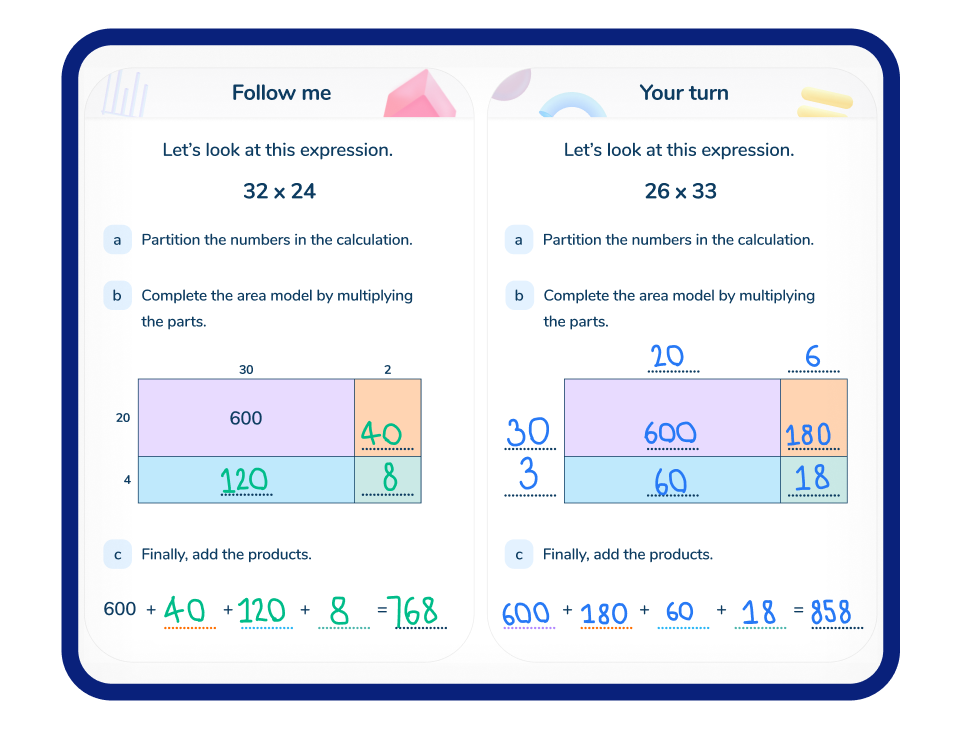
Follow me + your turn
Students work through a scaffolded example with their tutor before trying a similar question on their own
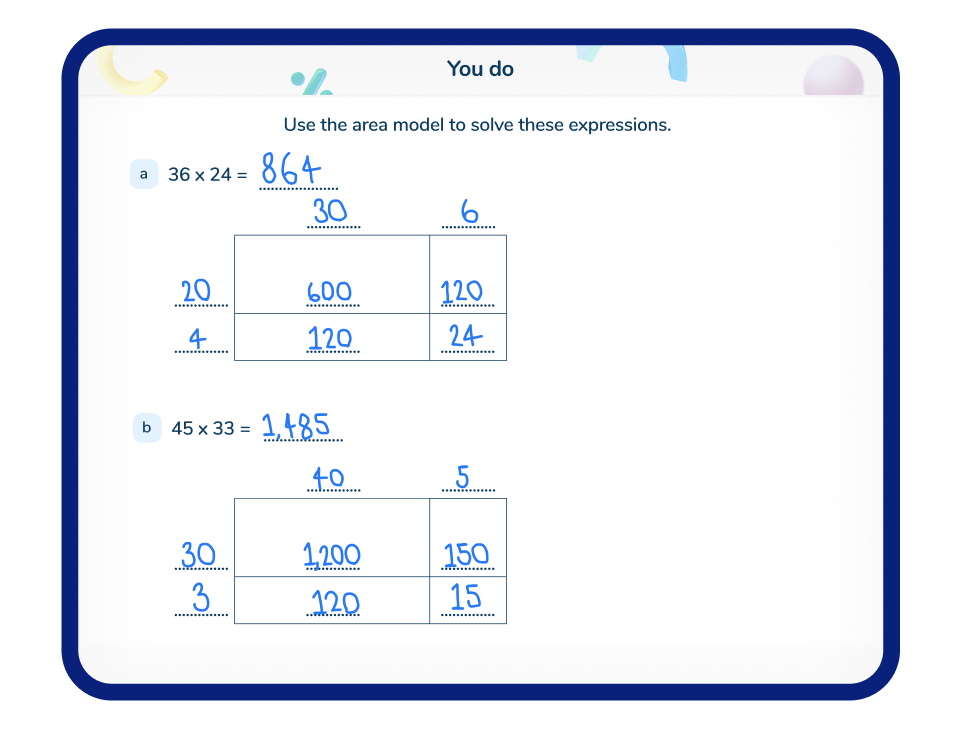
You do
A carefully sequenced next question ensures students can apply knowledge to different contexts
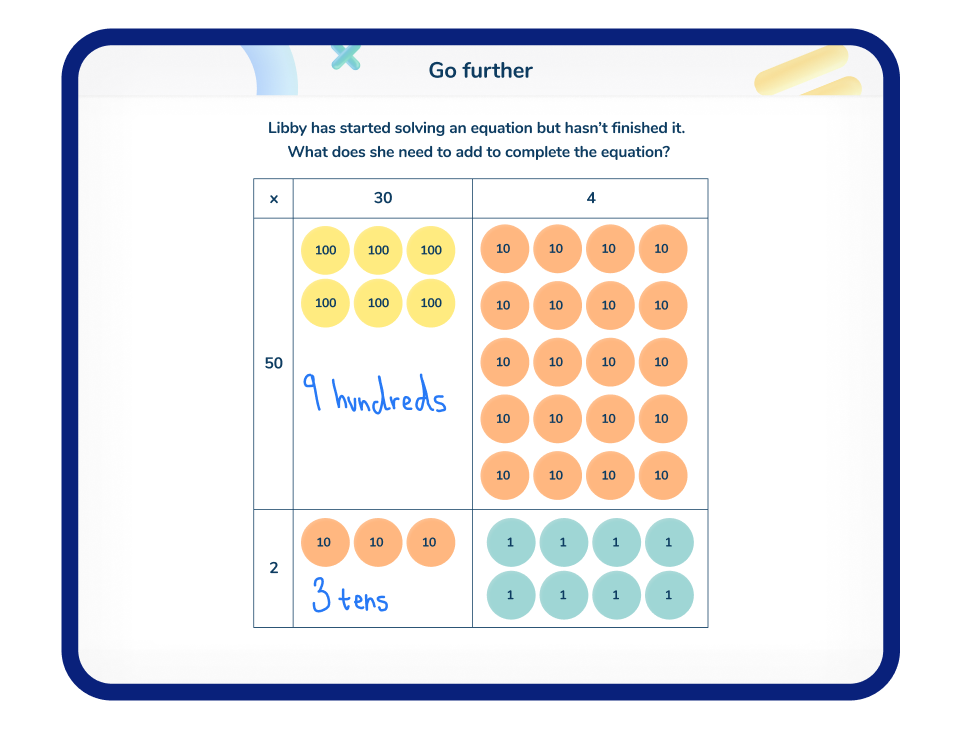
Go further
This gives students an opportunity to apply their knowledge to problem solving and reasoning questions
Multiplying and dividing whole numbers and decimals by powers of 10
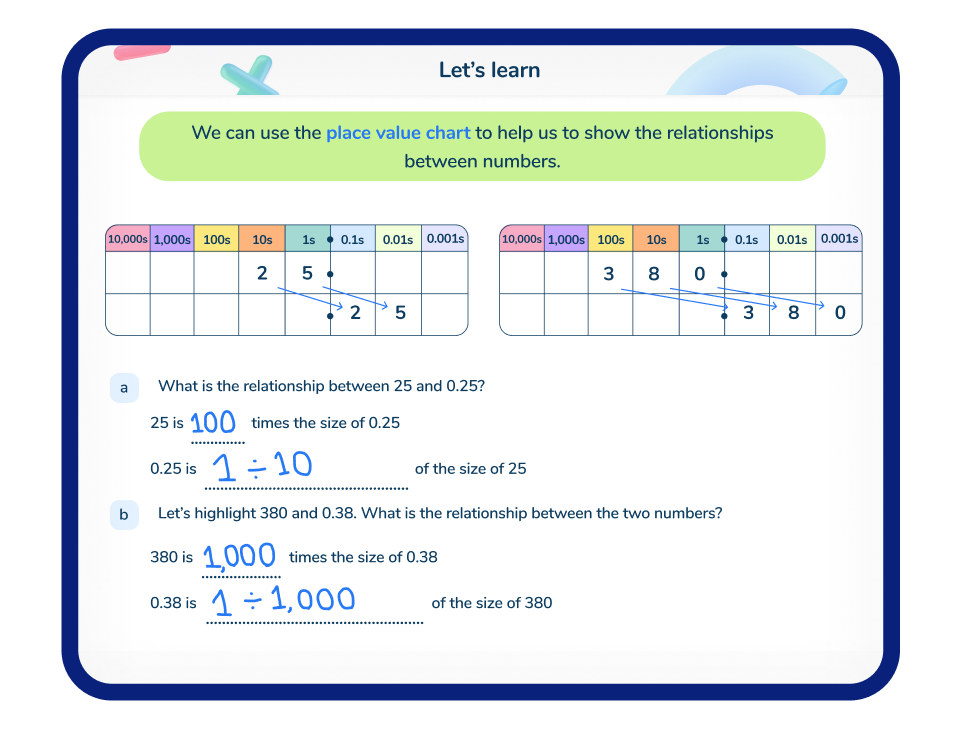
Let’s learn
The first question introduces each concept and helps students feel ready to learn
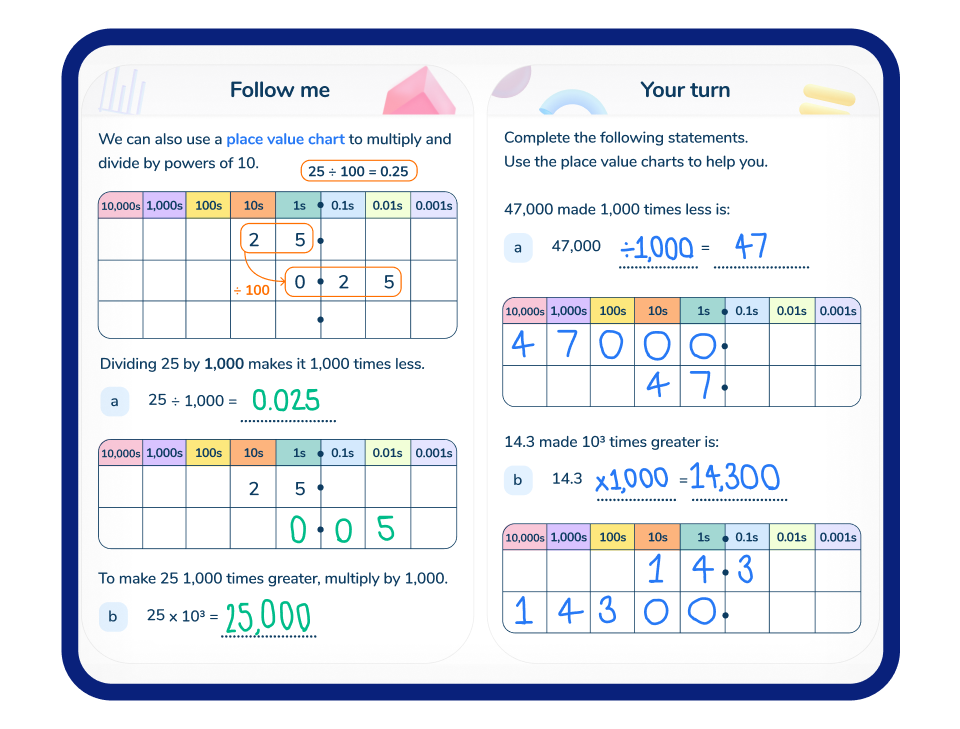
Follow me + your turn
Students work through a scaffolded example with their tutor before trying a similar question on their own
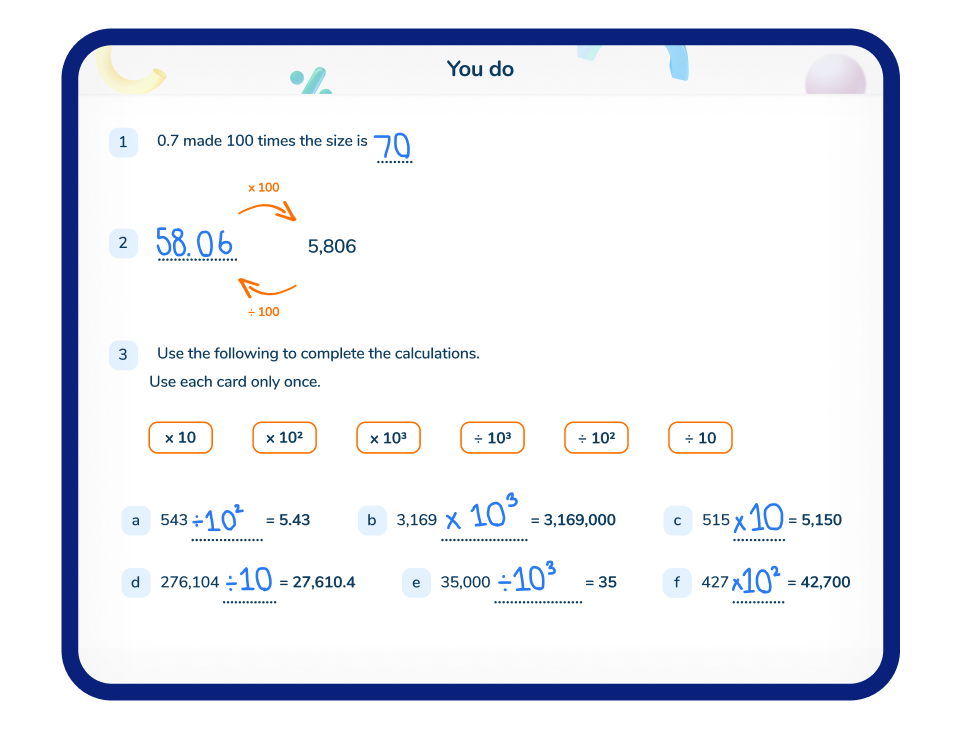
You do
A carefully sequenced next question ensures students can apply knowledge to different contexts
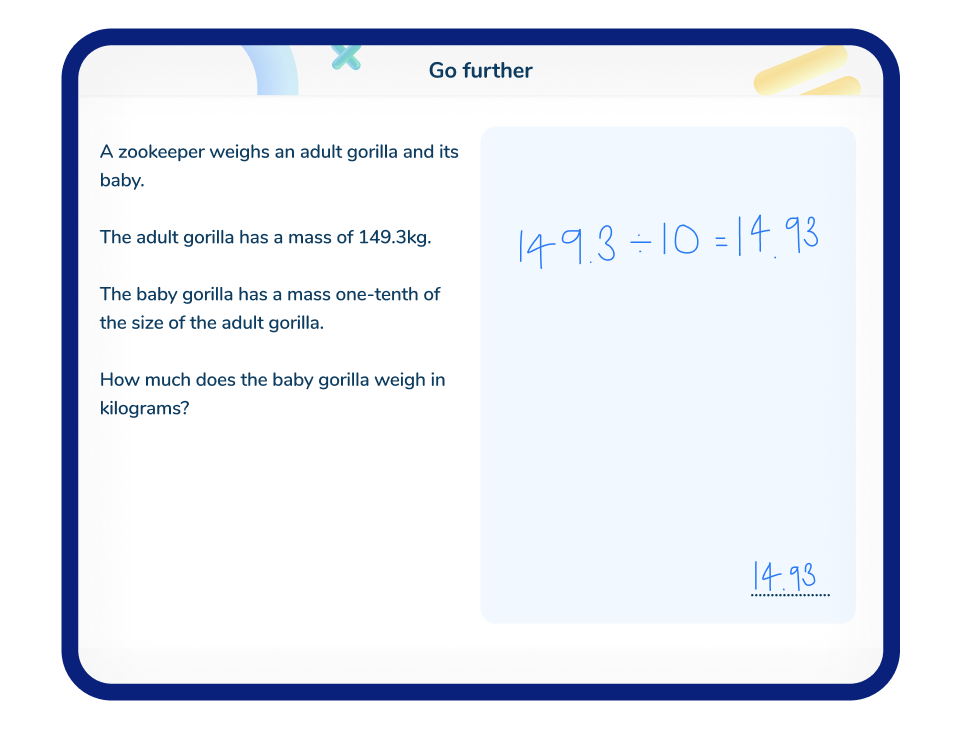
Go further
This gives students an opportunity to apply their knowledge to problem solving and reasoning questions
Using the algorithm for division
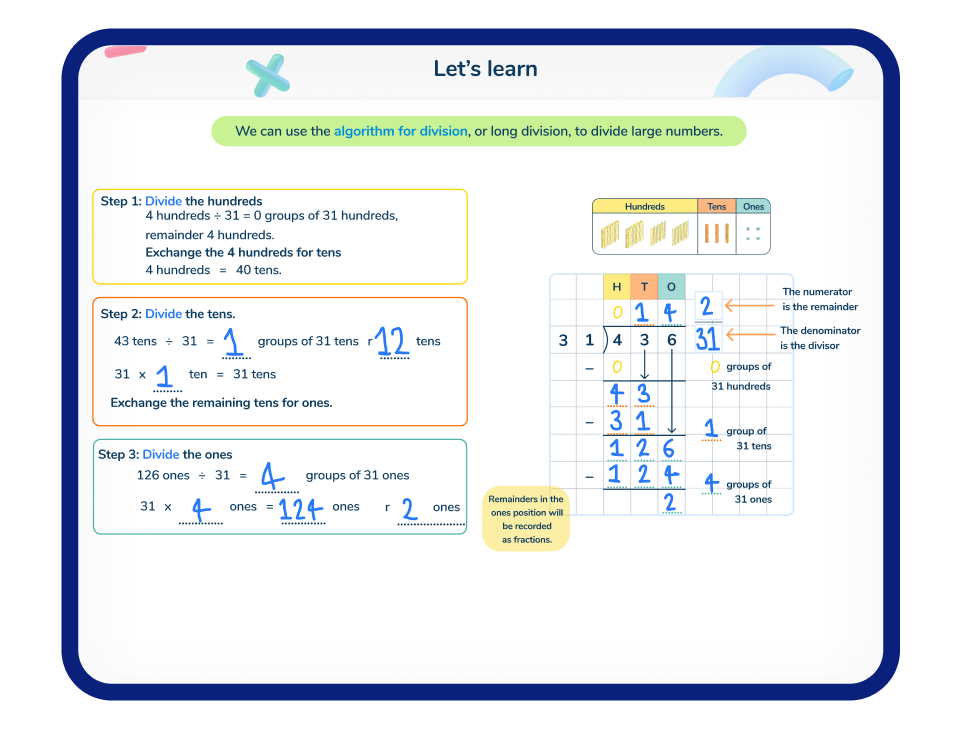
Let’s learn
The first question introduces each concept and helps students feel ready to learn
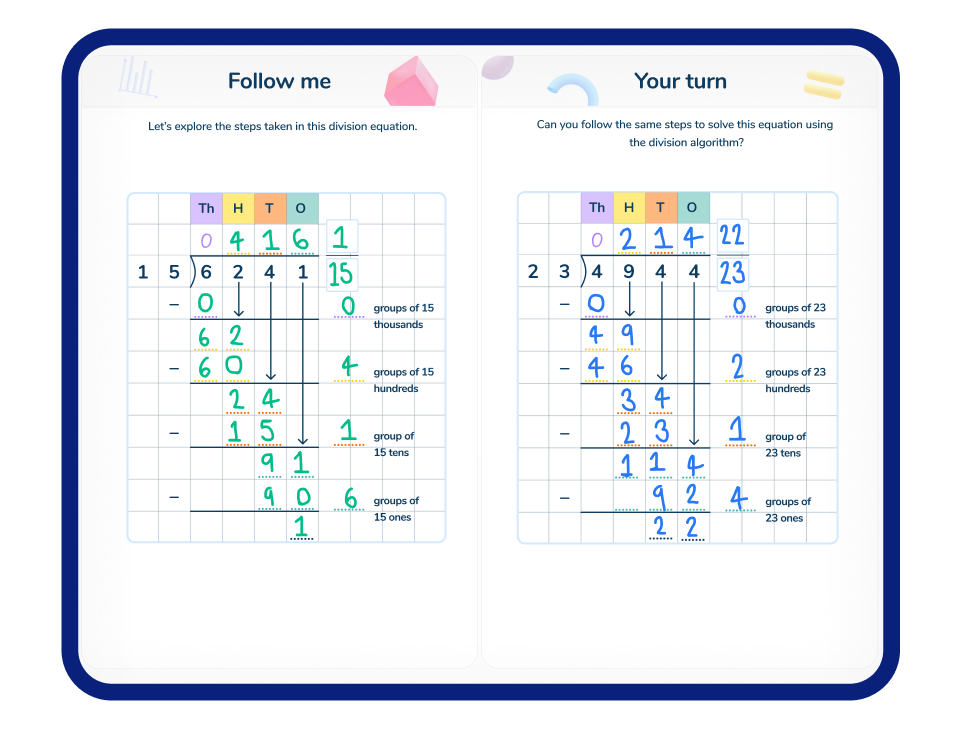
Follow me + your turn
Students work through a scaffolded example with their tutor before trying a similar question on their own
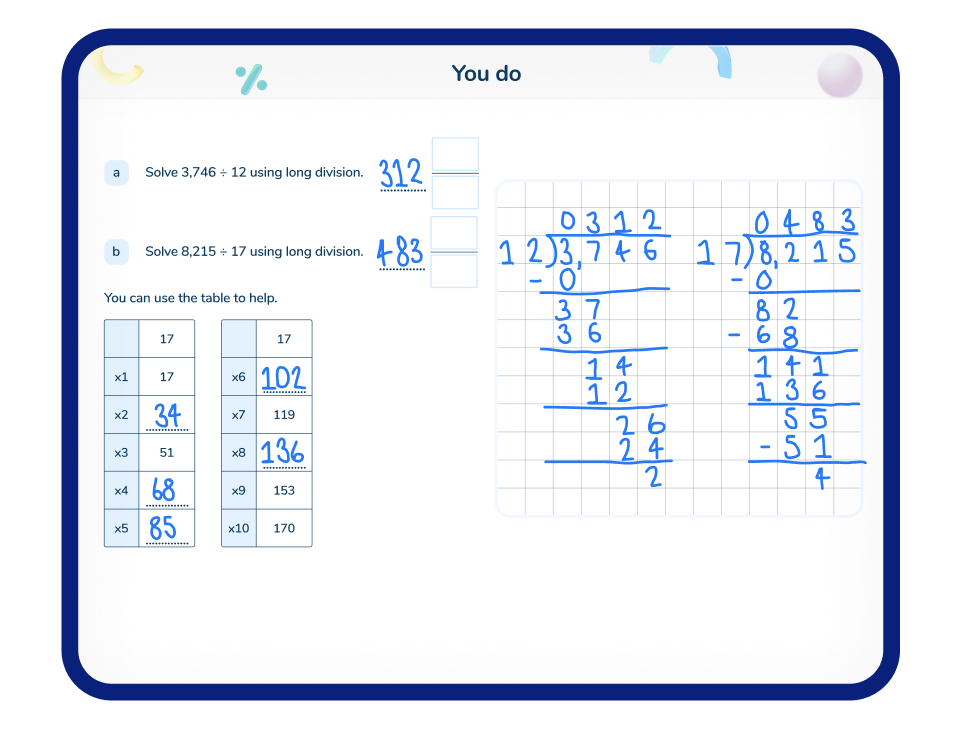
You do
A carefully sequenced next question ensures students can apply knowledge to different contexts
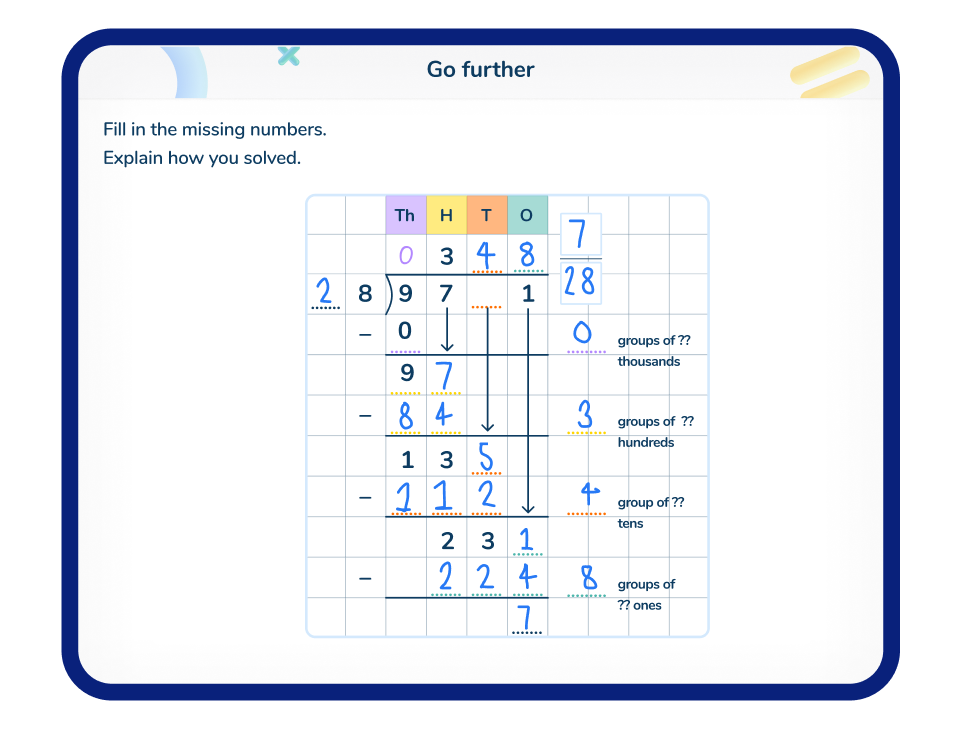
Go further
This gives students an opportunity to apply their knowledge to problem solving and reasoning questions
Understanding proportional relationships
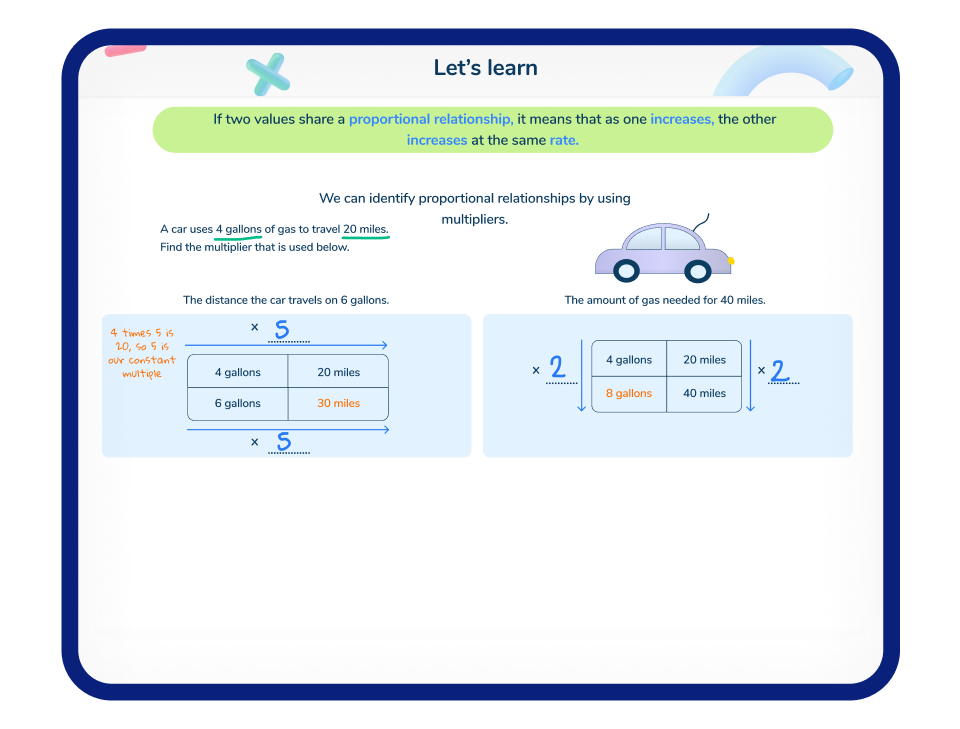
Let’s learn
The first question introduces each concept and helps students feel ready to learn
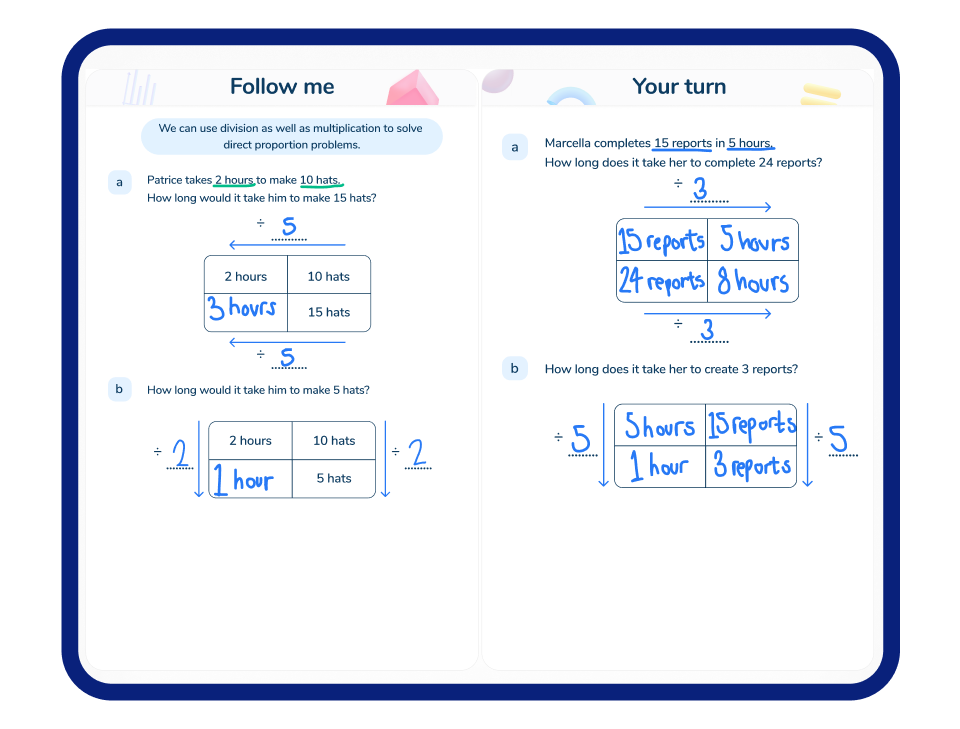
Follow me + your turn
Students work through a scaffolded example with their tutor before trying a similar question on their own
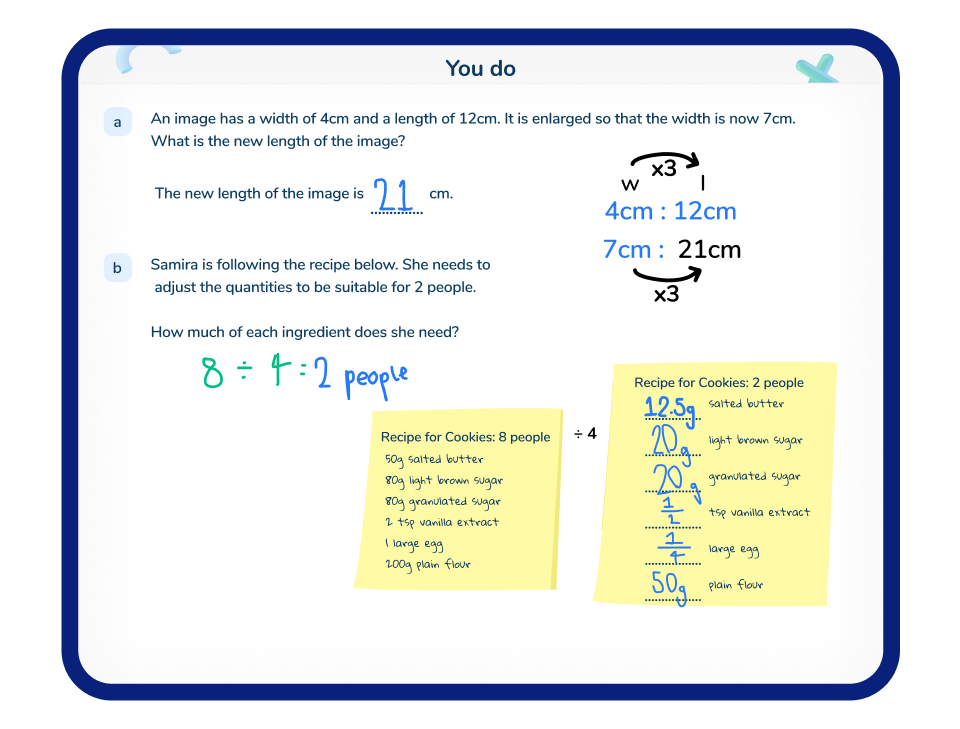
You do
A carefully sequenced next question ensures students can apply knowledge to different contexts
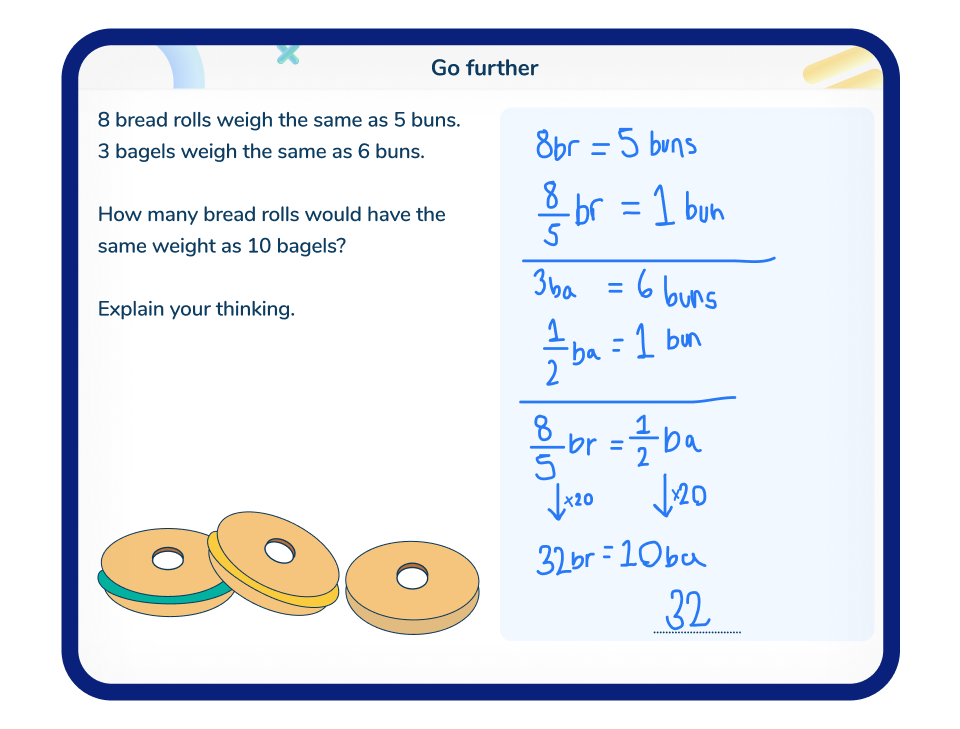
Go further
This gives students an opportunity to apply their knowledge to problem solving and reasoning questions
Identifying functions
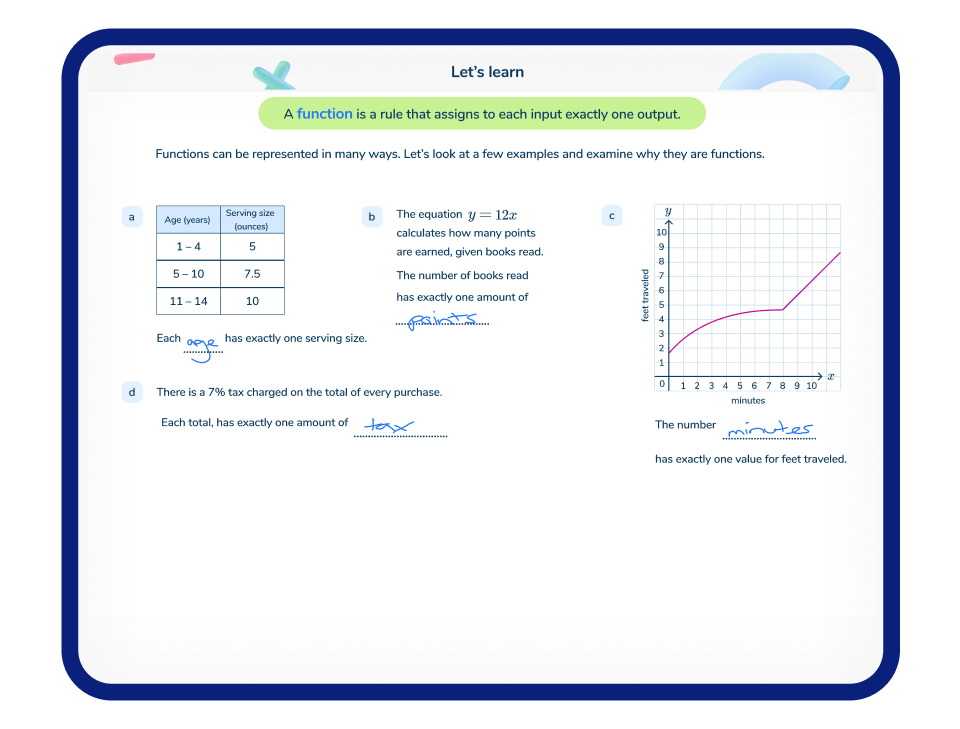
Let’s learn
The first question introduces each concept and helps students feel ready to learn
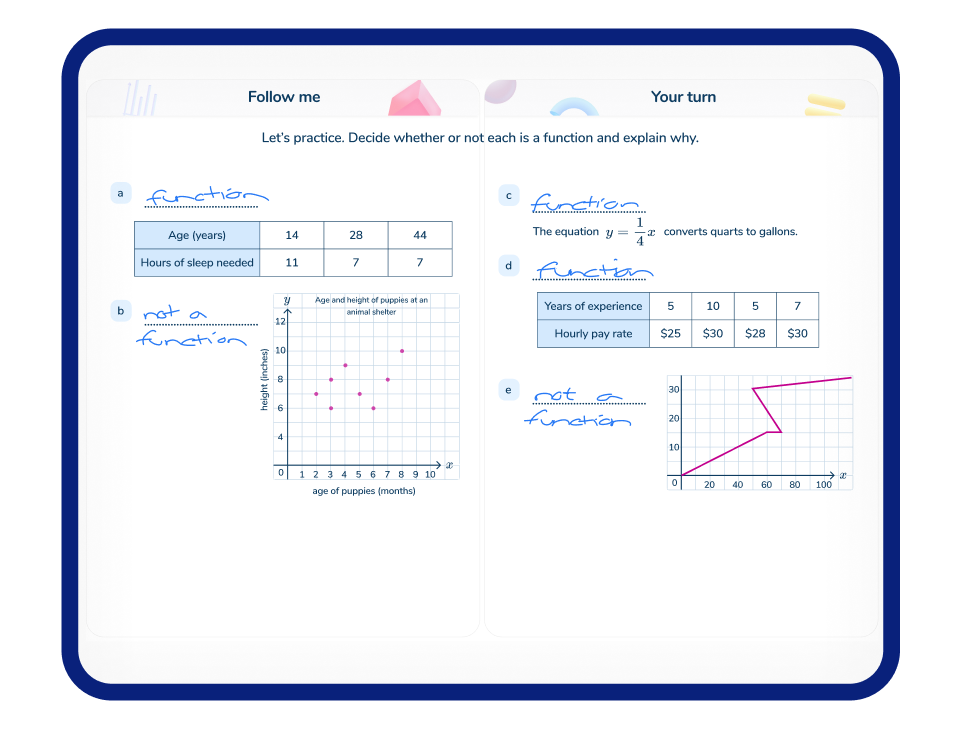
Follow me + your turn
Students work through a scaffolded example with their tutor before trying a similar question on their own
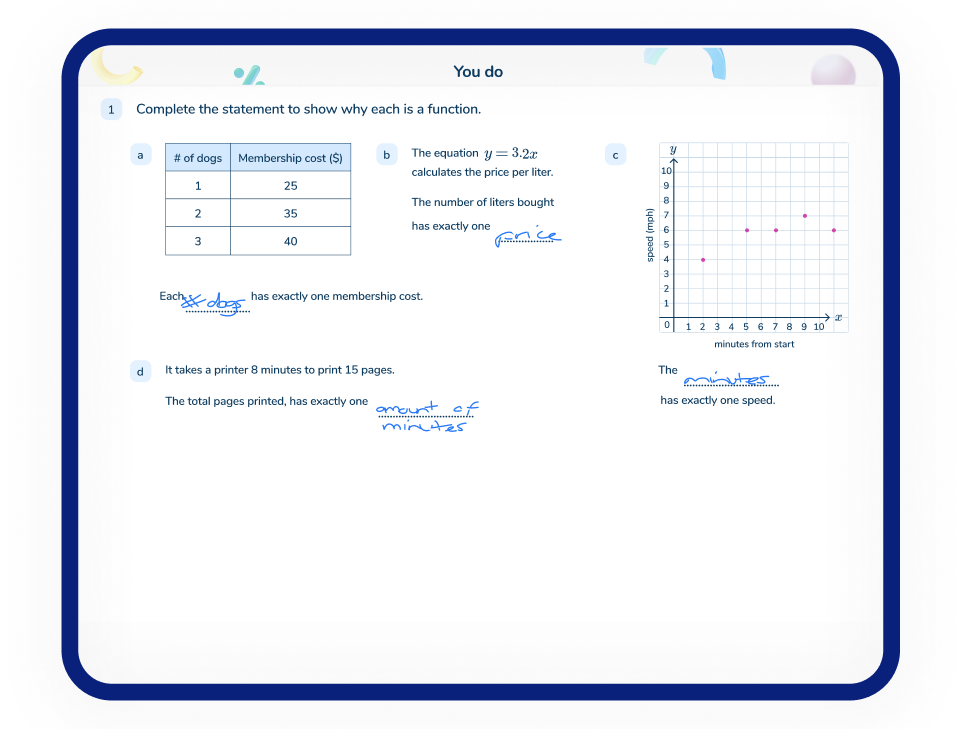
You do
A carefully sequenced next question ensures students can apply knowledge to different contexts
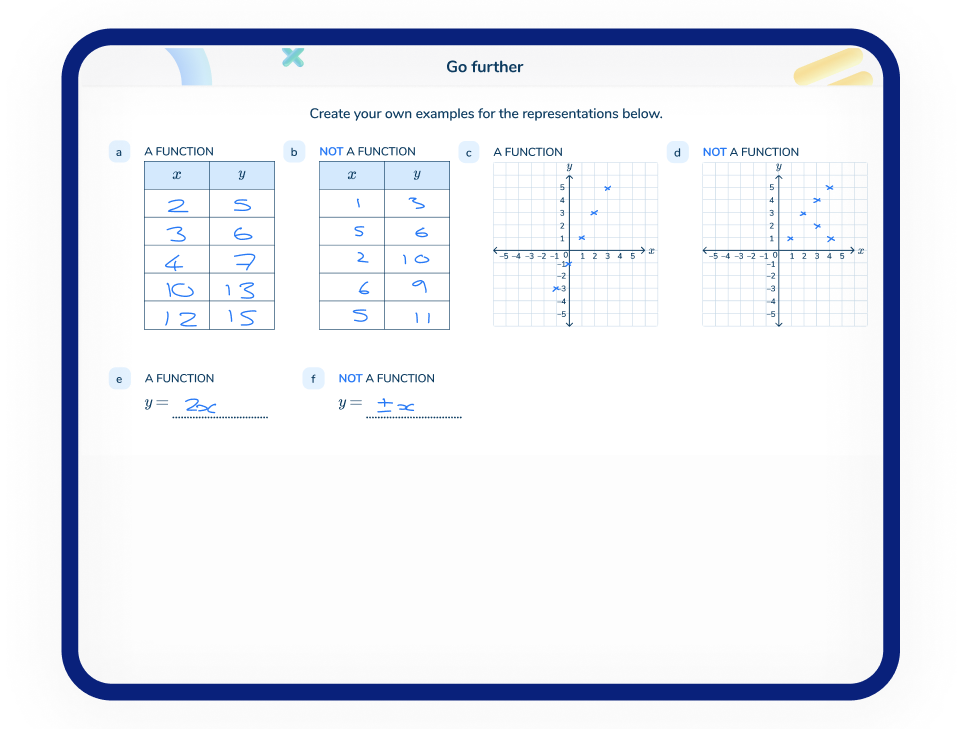
Go further
This gives students an opportunity to apply their knowledge to problem solving and reasoning questions
Flexible scheduling and pricing
Community schools typically run sessions after school with 21st CCLC grant funding or during the school day with Title I funding.

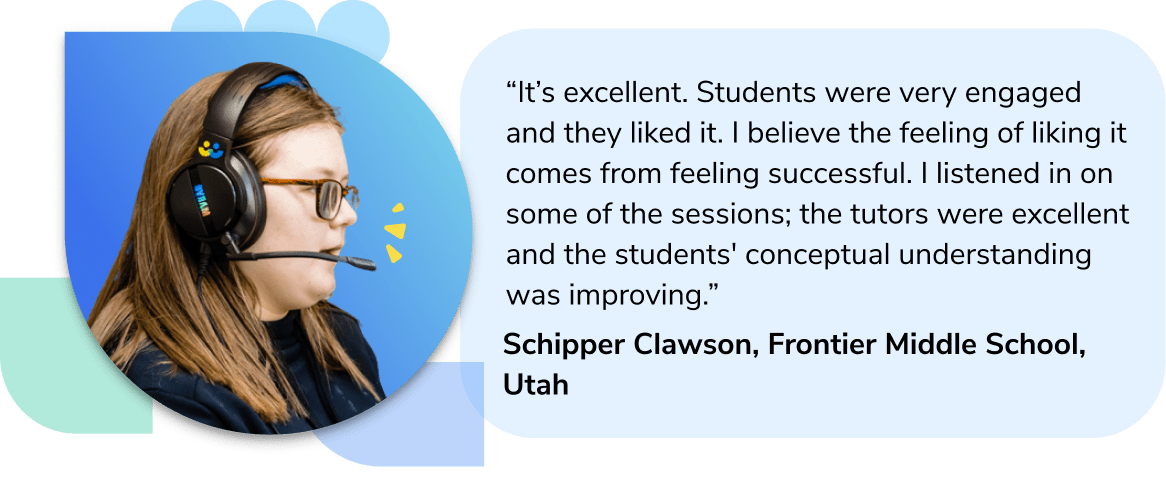
Short on time?
This handy one-page guide has everything community schools like yours need to know about supporting all students to succeed in math with personalized one-on-one math tutoring for the students who need it most.
Book a free tutoring demo for your community school
Explore the online classroom, preview lessons aligned to your state’s standards and see for yourself why 4,000+ schools like yours have chosen high impact one-on-one math tutoring from Third Space Learning:
Proven to accelerate math growth in half the time
2.4x cheaper than the average cost of one-on-one tutoring
Builds engagement, boosts confidence and develops positive math mindsets
Flexible scheduling according to your school and district’s needs